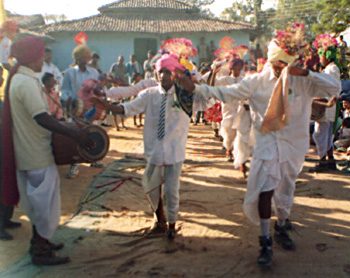 Culture of Jashpur District is heavily influenced by the traditions and lifestyle of the tribal communities of this region. This district is a tribal district. Uraon caste is spread throughout Jashpur District. Initially, they were settled in the forest area because these places were more suitable for cultivation. They were fully dependent on agriculture and forest wealth.
Culture of Jashpur District is heavily influenced by the traditions and lifestyle of the tribal communities of this region. This district is a tribal district. Uraon caste is spread throughout Jashpur District. Initially, they were settled in the forest area because these places were more suitable for cultivation. They were fully dependent on agriculture and forest wealth.
As far as their marriage is concerned, Uraon`s culture is the same as it was in the past. Only marriage blessing ceremony has changed of those who are the follower of Christian religion. Parents of a marriageable boy send message to the family of the girl seen eligible by the boy`s parent. If the girl`s parent accepts the message, they invite them to come on a particular date and time. Bride`s party come with two or three Panch`s to the groom`s family. According to the traditions of Uraon tribal group, surname of the boy and the girl should not be the same. This is the first identity of Uraon cast. There are three significant steps of a marriage ceremony and these are - engagement, Lotapani (Mangni) and marriage. In Uraon culture, boy goes to bring her groom with a `Barat`. If the groom`s family is unable to manage at any step, bride`s side helps either by money or whateverit is that they need. This is another identity of the Uraon culture. Dowry system does not exist. The major musical instruments used by them are Drum, Mandar, Nagada, Dhank, Dafli, Mridang and Timki.
Uraon cultural dance is considered as a good example of unity and affection. Karma is a traditional dance and jalsa is another form of their traditional dance. The tribal group of this region follows Sarna Religion. Sarna is the worship place of these tribes.
This article is a stub. You can enrich by adding more information to it. Send your Write Up to content@indianetzone.com



















